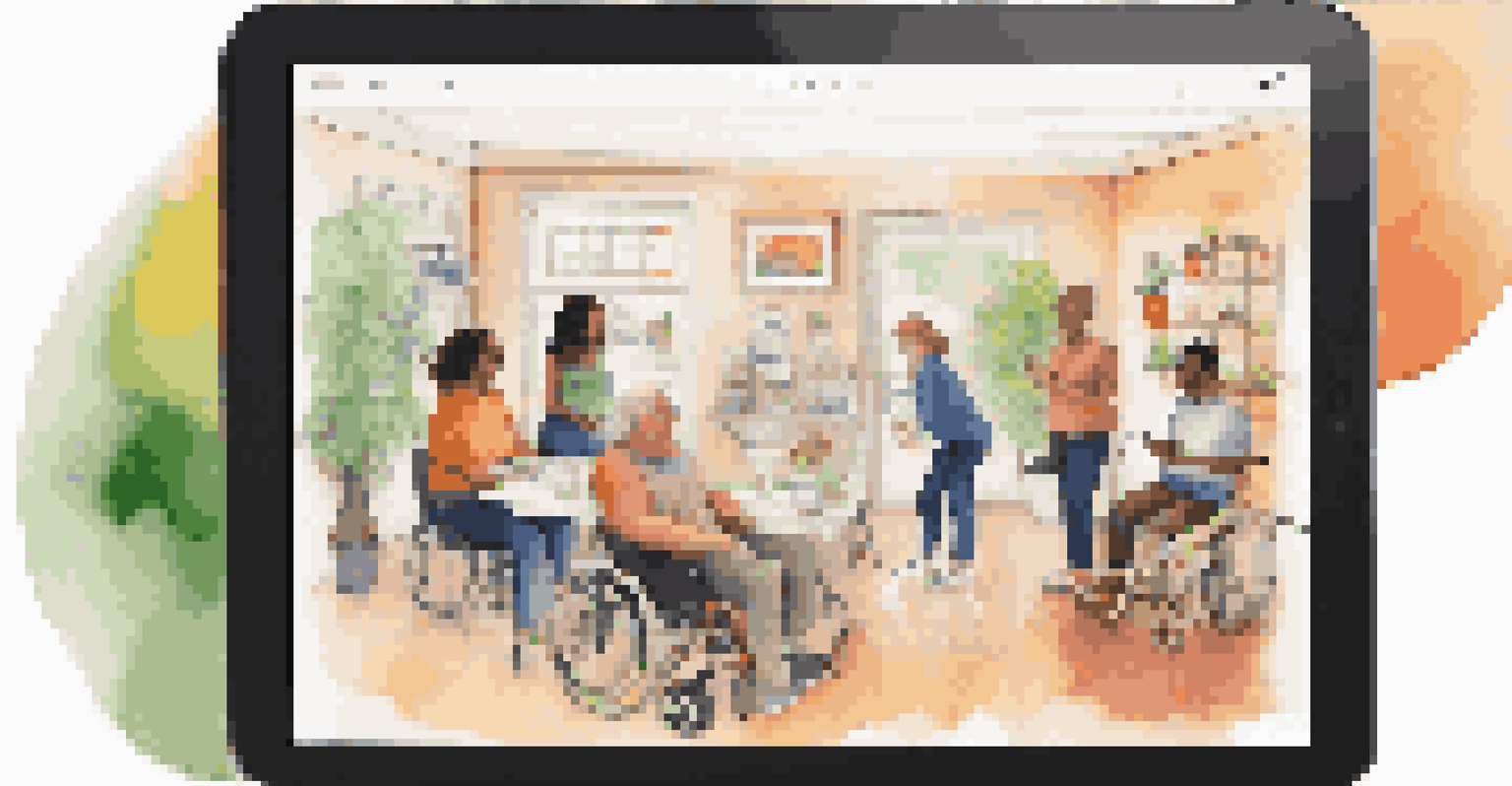The Importance of User Experience in Health Apps Design

Understanding User Experience in Health Apps
User experience (UX) refers to how a person feels when interacting with a system or product. In the context of health apps, UX encompasses everything from the app's design to its functionality. A positive user experience can significantly enhance how users engage with health apps, making them feel more empowered in managing their health.
Good design is about making other designers feel like idiots because that idea wasn't theirs.
When users find an app intuitive and easy to navigate, they're more likely to use it consistently. This consistency is crucial in health management, as regular tracking and engagement can lead to better health outcomes. Thus, understanding the nuances of user experience is vital for developers aiming to create effective health apps.
Moreover, a well-designed UX can help bridge the gap between technology and users. Many individuals may feel overwhelmed by medical information, but a user-friendly app can present this data in a digestible manner, fostering better understanding and compliance.
The Impact of User-Centered Design
User-centered design focuses on the needs and preferences of the end user throughout the development process. In health app design, this means involving real users from the very beginning, gathering their feedback, and iterating based on their experiences. By prioritizing users' needs, designers can create more relevant and effective applications.

For instance, consider a diabetes management app. By engaging with diabetics during the design phase, developers can learn what features are most important, such as easy logging of blood sugar levels or dietary recommendations. This targeted approach can lead to a more successful app that genuinely addresses users' concerns.
User-Centered Design Enhances Apps
Involving real users in the design process leads to health apps that better meet their needs and foster trust.
Ultimately, user-centered design not only enhances satisfaction but also fosters trust. When users feel that their needs are prioritized, they are more likely to rely on the app as a helpful tool in their health journey.
Enhancing Accessibility in Health Apps
Accessibility is a crucial aspect of user experience, especially in health apps. A well-designed app should cater to users with varying abilities and backgrounds, ensuring that everyone can benefit from its features. This inclusivity not only broadens the app's user base but also aligns with the core values of healthcare: equal access to information and resources.
The details are not the details. They make the design.
For example, incorporating features like text-to-speech, adjustable text sizes, and contrast options can make a health app more usable for individuals with visual impairments. By considering diverse user needs, designers can create an app that feels welcoming and approachable for all.
Incorporating accessibility into the design process ultimately enhances overall user experience. When users feel that an app is easy to navigate, irrespective of their abilities, they are more likely to engage with it regularly.
Reducing Cognitive Load in Health Apps
Cognitive load refers to the amount of mental effort required to use a product or service. In health apps, high cognitive load can lead to frustration and disengagement, as users may struggle to find the information they need. To improve user experience, it is essential to minimize this load by simplifying navigation and presenting information clearly.
For instance, using straightforward language and clear visuals can help users understand complex health data without feeling overwhelmed. A clutter-free interface, with intuitive navigation, allows users to focus on their health goals rather than getting lost in the app.
Accessibility Broadens User Base
Designing health apps with accessibility features ensures that individuals with varying abilities can benefit from them.
By reducing cognitive load, health apps not only become more user-friendly but also encourage users to take an active role in managing their health. This empowerment can lead to improved health outcomes and a more positive relationship with technology.
Personalization in Health App Design
Personalization can play a significant role in enhancing user experience in health apps. By tailoring features and content to individual users, apps can create a more engaging and relevant experience. Personalization can range from simple adjustments, like user preferences for notifications, to more complex algorithms that recommend health tips based on user behavior.
For example, a fitness app might offer personalized workout plans based on a user's fitness level and goals. By providing relevant recommendations, users are more likely to stay motivated and engaged with the app.
Ultimately, personalization fosters a deeper connection between users and the app, making it feel less like a generic tool and more like a supportive companion on their health journey.
Building Trust Through Transparency
Trust is an essential component of user experience, particularly in health apps where sensitive personal data is involved. Users need to feel confident that their information is secure and that the app is providing accurate health guidance. Building trust can be achieved through transparency about data usage, privacy policies, and the qualifications of the information presented.
For instance, health apps that clearly explain how they use user data and who has access to it can alleviate concerns. Additionally, displaying credentials for any health information provided, such as backing by medical professionals, can enhance credibility.
Feedback Fuels Continuous Improvement
Regular user feedback helps developers refine health apps, ensuring they evolve with users' changing needs.
When users trust an app, they are more likely to utilize its features and follow its recommendations. This trust is foundational for fostering long-term engagement and achieving positive health outcomes.
The Role of Feedback in Continuous Improvement
Collecting user feedback is vital for the ongoing success of health apps. Regularly seeking input from users allows developers to identify pain points and areas for improvement. This iterative process ensures that the app evolves in response to users' changing needs and preferences.
For example, an app might launch a new feature based on user suggestions, leading to increased satisfaction and engagement. By demonstrating that user feedback is valued and acted upon, developers can foster a sense of community and loyalty.

Incorporating feedback loops not only enhances user experience but also keeps the app relevant in a rapidly changing healthcare landscape. This commitment to continuous improvement can set a health app apart from its competitors.